How-to Laser Alignment
General
This How-to will describe how the calculations in the Validator are done.
The calculation is different from a standard Multibeam calibration and it is not possible to compare the two methods.
It is also dependent on how the laser patch test is done: when an object is used, like a pole or bridge pillar, then the calculation will be different than when a quay is used for the roll calculations.
This page will describe how to calculate the roll, pitch and heading offsets when an object is used.
Validator
The Validator is a program in the Survey Manager of Qinsy.
With the Validator, it is possible to clean the data, shift, process or calculate the patch test. This page will only describe the elements that are used for the patch test calibration. More information about the operation of the Validator can be found in the Validator's inline Help.
| 1 | The files which are loaded into the Validator are shown here. When a file is expanded, it is possible to turn the systems on or off that are recorded in the QPD. It is advised to only turn on the laser if a laser calibration is done and deselect the other systems (if applicable). |
| 2 | Profile View. A profile of the recorded data is shown in this pane. |
| 3 | Plan View. A overview of the data from above is shown in this pane. |
| 4 | 3D view. Validator will start automatically with the swath view mode enabled. To select the 3D view, right click in the swath view pane and select 'Switch to 3D view'. The data is shown in 3D which makes it easier to recognize offset errors. |
| 5 | It is possible to edit the data with the buttons that are described here. Enable the 'spectacles' check button first. |
Close the Calibration tool
Unfortunately, when an offset is applied to the data is it necessary to close down the calibration tool.
Otherwise the offset is not applied to the data and the 3D view will not update.
The profile view will update after every step.
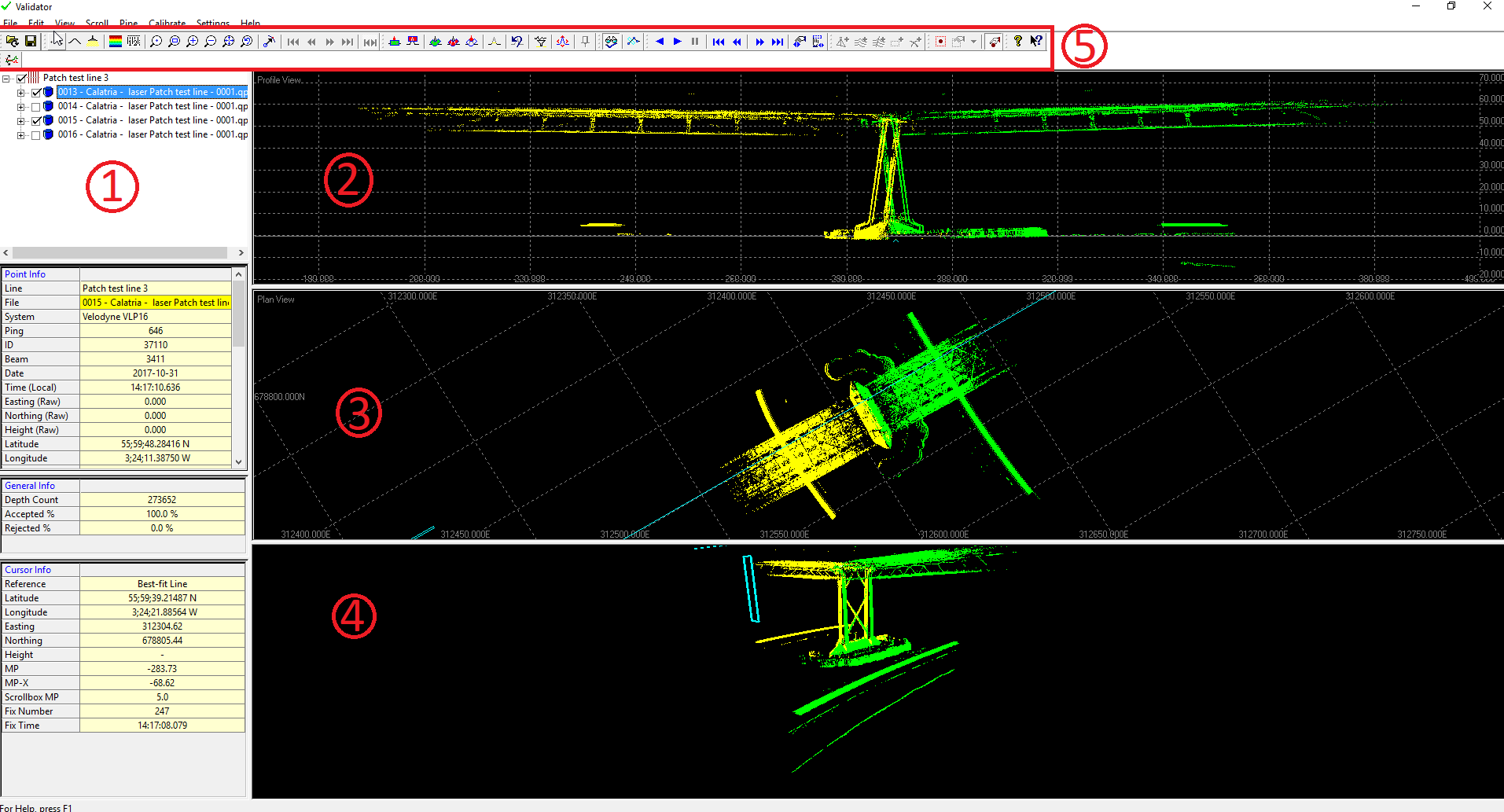
Roll
A Roll offset can look like a heading offset. It is important to sail the same line in opposite direction otherwise it will be really hard to calculate the roll from the data. Unfortunately it is not possible to calculate the roll offset automatically in the Validator like in Qimera. When an offset is applied to the data, is it necessary to close down the calibration tool, otherwise the offset will not be applied to the data.
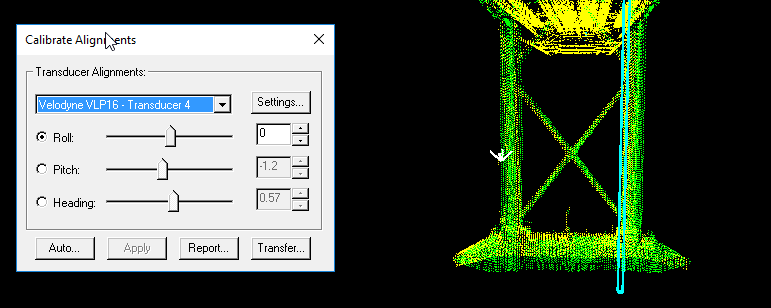
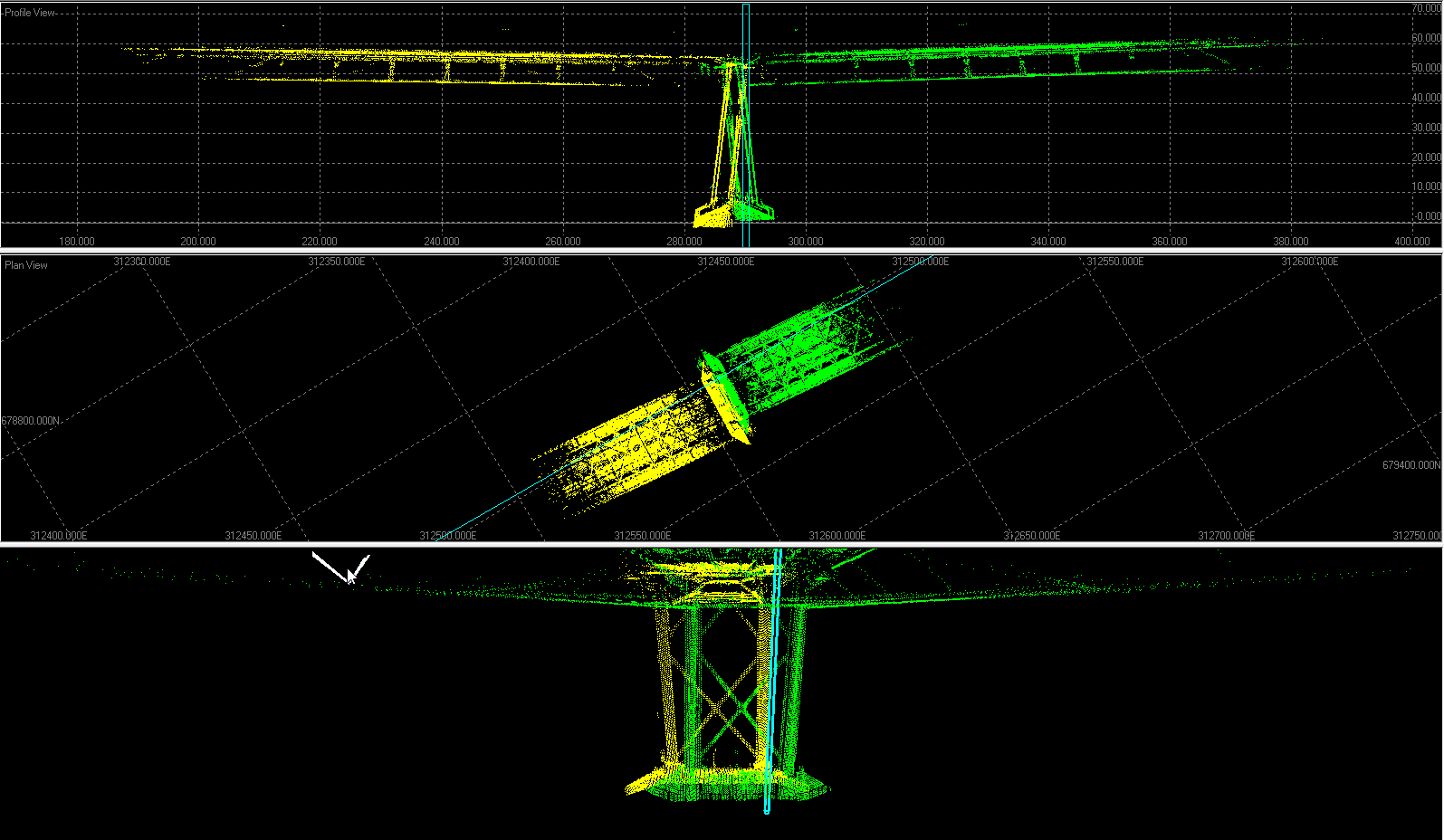
Pitch
A Pitch offset can be recognized as 'tilted' data. The higher the object is, the more it is tilted. The image at the right shows what can be expected from the data when a big Pitch offset is present in the data. This image a somewhat dramatized so that the image is more clear. The smaller the object, the harder it will be to recognize a Pitch offset.
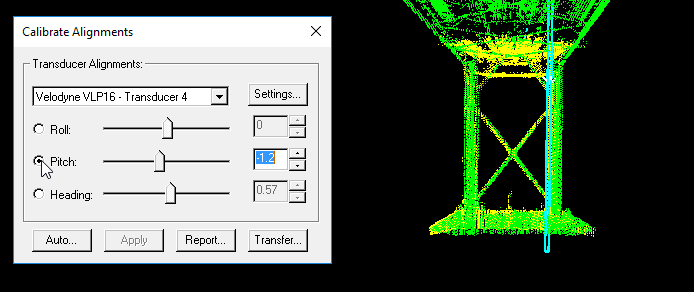
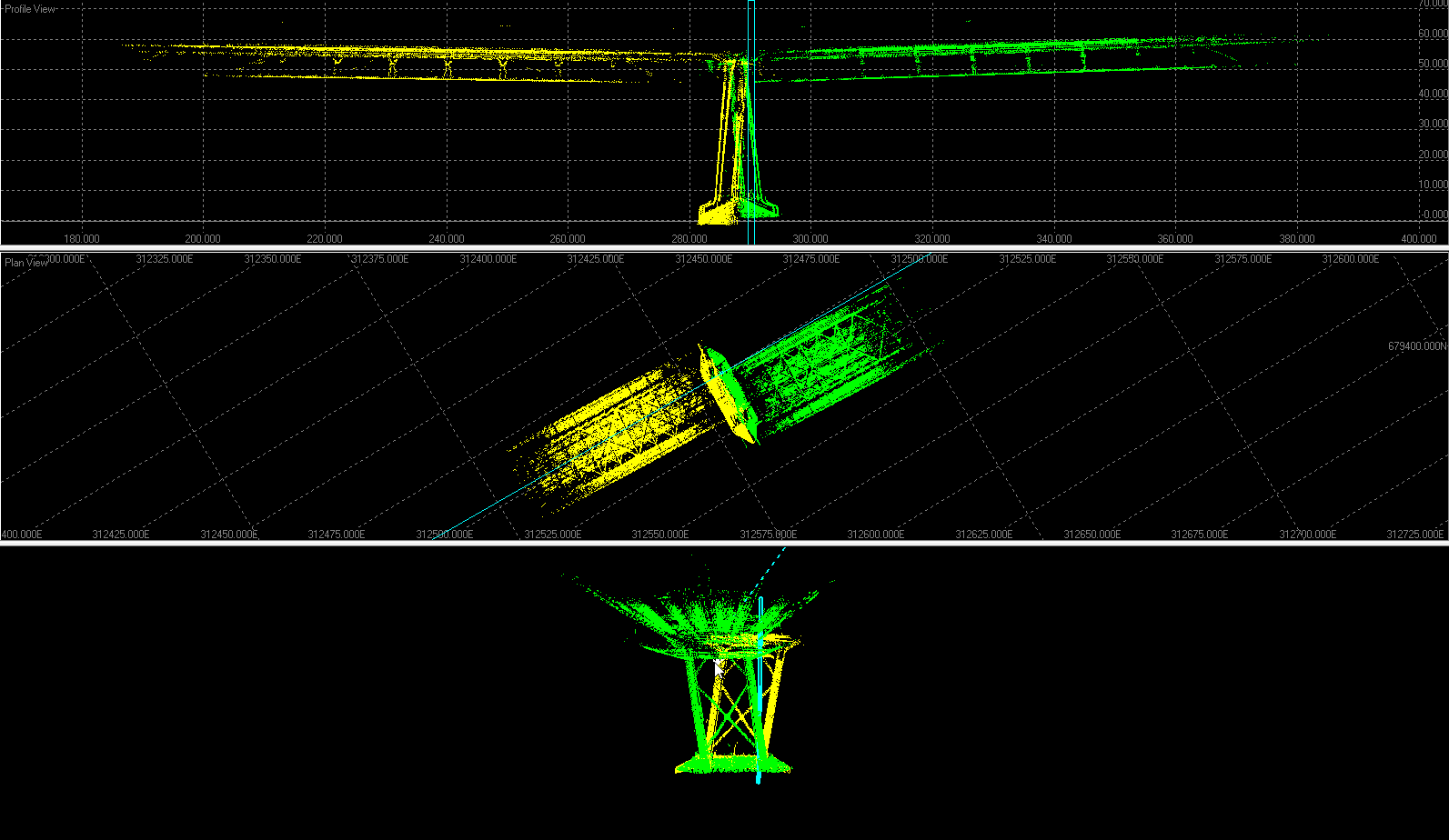
Heading
A Heading offset can be recognised as a position 'shift' in the data between the two lines. The image at the right shows what can be expected from the data when a Heading offset is present in the data. If a smaller object is used it might be harder to recognize.
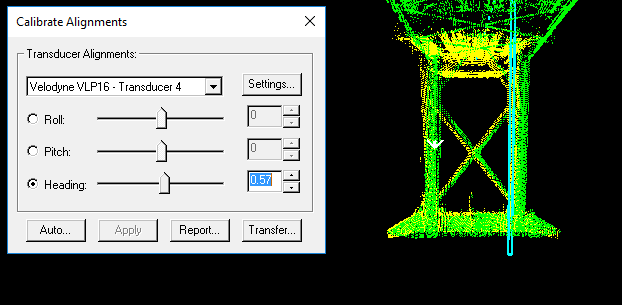
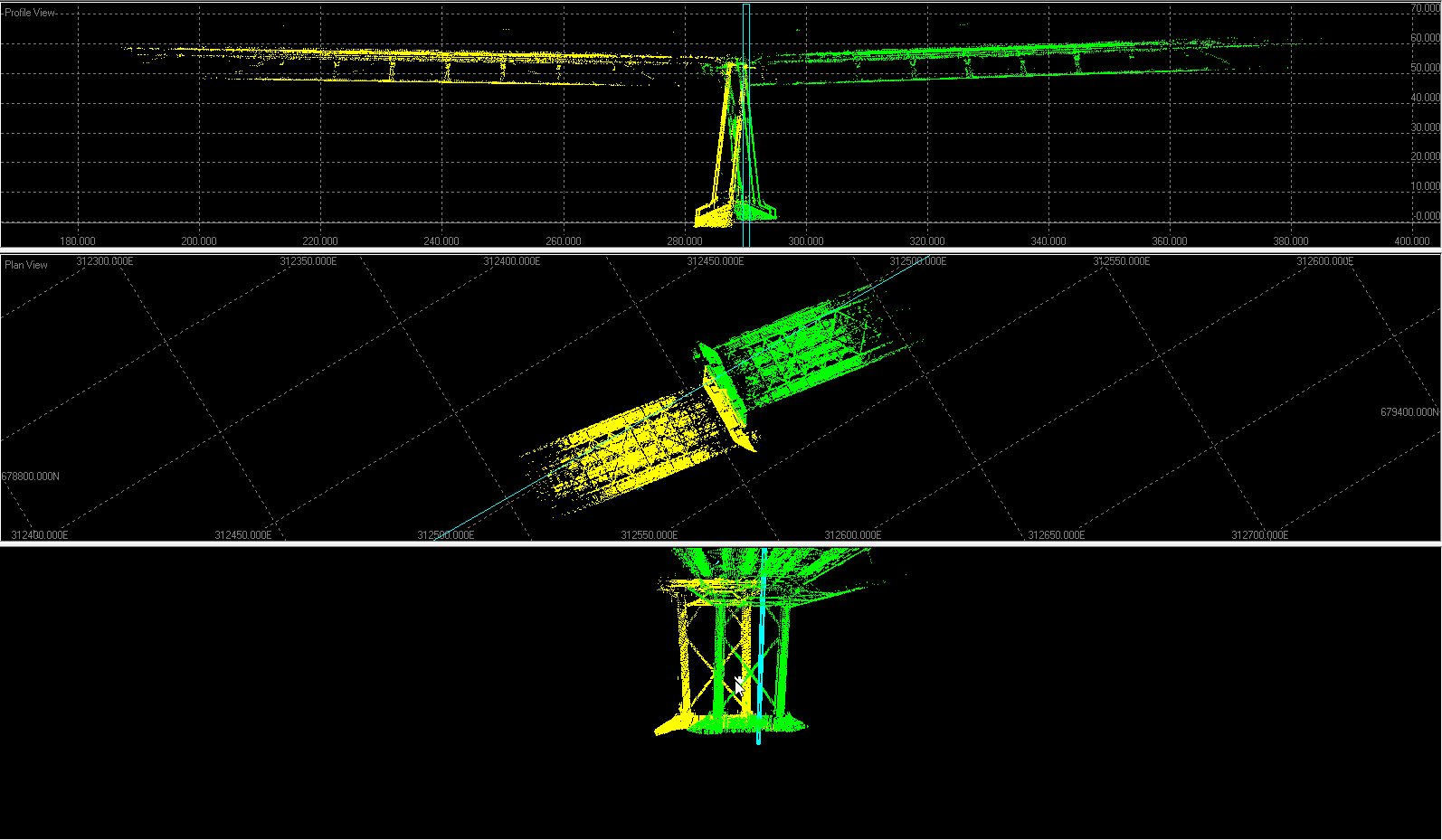
Return to: How-to Calibrate Vessel mounted Laser
